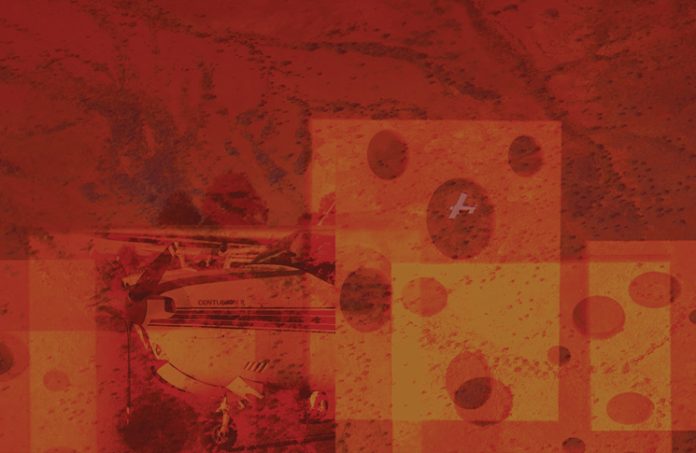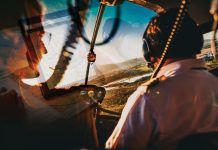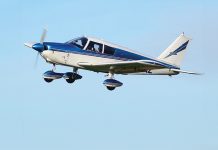A private pilot reflects on an early flight and how they would do things differently now.
I was flying from Canberra to Alice Springs in spring with 4 passengers and baggage for a week-long outback tour. At the time – 20 years ago – I owned a Cessna 210N, a very capable aircraft with an impressive range and useful load capability.
On the second leg of this trip I made some decisions that, with the wisdom and caution of experience, I would probably now make differently. As always, there were multiple factors involved and these factors played out – not all to my disadvantage in the end.
When I read incident reports, I always find myself saying, ‘Okay, I wouldn’t have done that’. Now I expect readers will have a similar experience with my story.
I will use James Reason’s ‘Swiss cheese’ metaphor for risk analysis and identify each ‘hole’ in the slice as it occurs. I think the successful final outcome can perhaps be explained by the fact that some of the ‘holes’ were able to be managed without too many accumulating and ‘lining up’.
The trip was via Broken Hill (YBHI) and Oodnadatta (YOOD). I planned to do the 1,091 nm in one day, which does seem ambitious now. We were to attend a festival in the Alice starting the next day and we had booked accommodation for that night.
Hole #1: A long flight with subtle get-there-itis pressures
We set off from Canberra at 0700 in clear weather and arrived at Broken Hill for morning coffee and fuel.
The addition to the aircraft of a fuel-flow meter and well calibrated dipstick had provided reliable support for the rather haphazard indications of the original gauges. I was familiar enough with the aircraft to usually load the required flight fuel, plus IFR reserves, for each leg. On this trip especially, weight considerations were relevant.
For the first leg (435 nm), I had loaded 250 L, which turned out to be very close to requirements, as we arrived at Broken Hill with the 50 L reserve intact. I planned to top up to 270 L for the second leg to Oodnadatta (419 nm).
The weather
The synoptic chart looked pretty benign, with a high over the east coast:
- front approaching from the west, areas of rain extending east
- trough expected to reach Oodnadatta by 2400, then stationary
- moderate mechanical turbulence developing below 5,000
- wind 330/35 all levels below 10,000, FZL 11,000
- SC CU/ST 4,000/10,000 BKN AC/AS above 10,000
- TAF YBHI 36018G32KT SCT045 mod turb BLW 5,000
- TAF YLEC 36020G35KT SCT045 mod turb BLW 5,000
- TAF YOOD 25020G35KT SCT040 mod turb BLW 5,000.
Hole #2: Playing down the strong and gusty winds forecast en route and at destination
This was obviously not great weather for a long trip so we decided to proceed cautiously and review the situation regularly. Weather on the first leg was mild and wind at Broken Hill was much less than forecast. We were probably lulled into a false sense of security.
I planned to do the 1,091 nm in one day.
After parking, I called for fuel and asked them to add 220 L and we went off for lunch. Returning to the aircraft, I noticed fuel dripping from the overflows – they had filled it to the brim.
So we had about 65 L more fuel than I had planned for and were overweight by about 52 kg. I could either drain the fuel out on the tarmac or depart overweight. This was not an easy decision but I decided that given the 15-kt headwind down the (long) main runway and flat terrain in the area, a slightly overweight departure should be okay. I would manage the speed if we experienced turbulence and we would be well underweight by the time we got to Oodnadatta.
Hole #3: Overloaded on departure from Broken Hill
I discussed this situation with my passengers and said the take-off would be ‘gradual’ and that ‘radio silence’ should be maintained on the intercom.
On the take-off run, I remained on the ground until I had plenty of speed and then held the aircraft in ground effect until I had enough additional speed to cover the added drag of retracting the wheels – a guess for sure, but I knew this aircraft. We continued to gain speed while I nursed the plane up and away into an almost normal maximum take-off weight (MTOW) climb. After an hour, I was comfortable that we were back within the envelope. (Hole #3 managed.) But there was more to come.
At 8,000 feet in clear conditions and approaching Leigh Creek, our en route alternate, I noted on the GPS that our ground speed had progressively reduced from 140 to 90 kts. After reassuring myself that this was not due to a mechanical failure, I realised we now had a 65-kt headwind!
Considering the extra hour that we would now require to reach Oodnadatta, I began a descent towards Leigh Creek. However, below 5,000, we experienced severe turbulence due to the surrounding hills.
Hole #4: Unable to land at alternate due to turbulence
After some rapid calculations, I confirmed that, thanks to the over-fuelling incident, we had sufficient range to continue to Oodnadatta. (Hole #4 managed – thanks to hole #3.)
We descended slowly and found gusty winds in the circuit.
Hole #5: Stronger than forecast winds at destination
The C210N’s maximum demonstrated crosswind is 21 kts; however, I was happy to see the wind was directly down runway 22. But the wind must have been a lot more than this and it proved to be strong enough that, after landing, weathercocking overwhelmed the rudder and we could not turn off the runway.
I put the brakes on, shut down and broadcast that our aircraft was blocking the runway. My passengers helped me push the aircraft off the runway and down the taxiway.
Hole #5: Managed – great runway alignment!
It was not long before there were sirens and blue lights flashing around us – the local constabulary had arrived. They were of course concerned that their trans-continental airport was closed to traffic. They ended up driving us into town for an overnight stay. Next day, the weather was good for the short run over to Alice Springs.
Lessons learnt
GA flying was different 20 years ago. Rudimentary ‘VFR’ GPS was available, but unreliable. On outback legs, the WAC, compass and clock were essential, while the primary aids were usually NDBs. My focus then was also different – I was doing quite a lot of what I would now call bush piloting. While I enjoyed the discipline of the IFR, ‘seat of the pants’ flying with landings at unsealed ALAs were the norm and I relished these challenges.
Since then, technology has changed the world, particularly in meteorology and navigation, and my interests have developed along the same lines. So today, I would expect to be able to gain a more detailed picture of the forecast weather en route. Taking into account the approaching front, strong headwinds and gusty crosswinds, I would probably have believed what the forecast was telling me and chosen to spend a day at Broken Hill.
Departing overweight is to be avoided of course; however, the extra fuel allowed us the option of continuing to Oodnadatta. Without that extra fuel, we would have had to return to Broken Hill or risk a landing in adverse conditions at Leigh Creek.
As mentioned, the weather was much better the next day – as is often the case. A short delay can make for a more pleasant and safer flight.
Have you had a close call?
Often the experience is something you’ll never forget and you’ve learnt a valuable lesson. Why not share your close call so others can learn from it too?
Articles should be between 500 and 1,000 words. Email fsa@casa.gov.au with your story or a request for a call back. If we publish your story, we’ll give you $500 for an article you’re written or $250 for a story over the phone.






learning from pilots time has stood still,I hope we all learn from pilots that have had close calls. I know I do,nothing is as helpfully as lessons with experience learnt.thank you to the authers